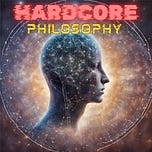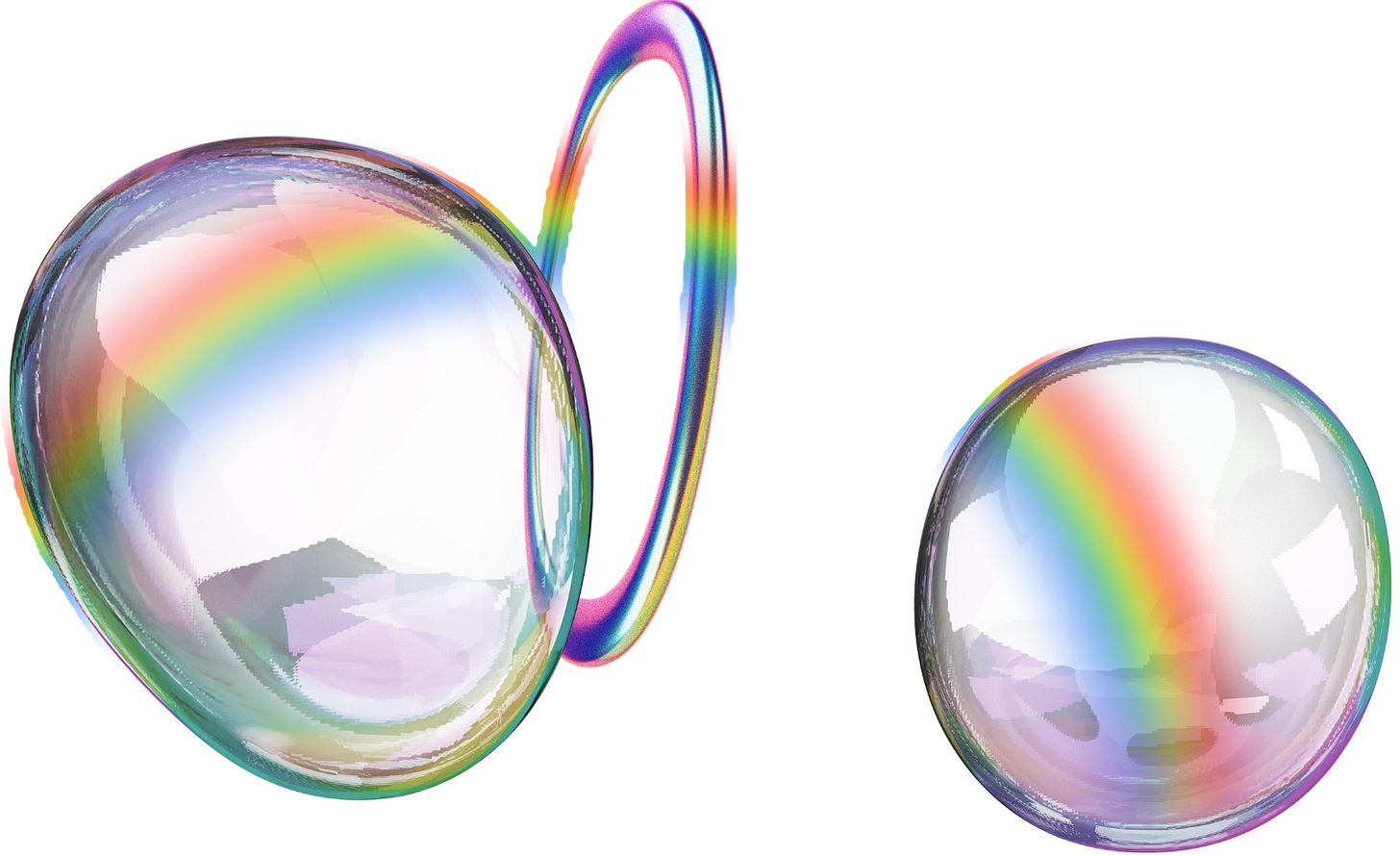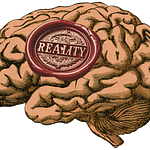I came across a blog post Keith Frankish wrote a while back called Like a rainbow, and it got me thinking about what it means to call something an illusion. This is an important term in philosophy of mind, given that some philosophers and scientists think consciousness is an illusion. I find this view perplexing, so much so that I have to wonder whether we’re using words in the same way. What do illusionists mean by the word ‘illusion’? I was hoping to find some stipulative definition that would help me make sense of this claim, but I couldn’t find anything. So instead I’ll assume ‘illusion’ means what we normally think it means.
What is an illusion?
I realize this question seems stupid, even childish. All I can say is, it can’t hurt to ask! Here’s what the Cambridge dictionary says:
An idea or belief that is not true. We have no illusions about how difficult the job will be.
Something that is not what it seems to be. They managed to create the illusion of space in a tiny apartment.
The second seems more pertinent:
ILLUSION: SOMETHING THAT IS NOT WHAT IT SEEMS TO BE.
My initial impression of a stick in water—the stick is bent—is illusory, because the stick turns out not to be bent when I pull it out of the water. That was easy, right?
Is a rainbow an illusion?
Some think it’s obvious that rainbows are illusions. I noticed this intriguing comment on Frankish’s blog post:
“One thing that’s interesting about rainbows is that people don’t seem to call them illusions very often. Perhaps that’s because no one is fooled for a moment that there are really arcs in the sky. They are so obviously illusions and so common, no one has to call them out for not being real.”
But what, exactly, is not real? Try to get an explanation as to why a rainbow is an illusion and you get some strange responses.
RAINBOWS AREN’T SOLID!
“Regardless of how substantial a rainbow looks, it’s only an optical illusion.” Mental Floss
How substantial a rainbow looks? They look pretty insubstantial to me! I’ve never been fooled into think a rainbow was a solid or tangible object. Have you?
RAINBOW PHOTONS CAN’T BE SHARED!
“When you talk about seeing a rainbow, it’s worth pointing out that the operative word there is “you”. Your eye perceives a rainbow thanks to the refraction, reflection and dispersion of light, but more precisely, thanks to the refraction, reflection and dispersion of the specific photons of light that have made it all the way from the Sun to your retina. Your friend standing next to you has a completely different set of photons hitting his/her/their retinas. So while you both may see a rainbow, you won’t see the same one: no two people on Earth ever have, or ever will!
Similarly, this is why rainbows don't actually touch the ground, and why you can't find the end of a rainbow: they're optical illusions caused by light being refracted by water.” BBC Sky at Night Magazine
So… rainbows are illusions because two viewers can’t share photons—and this is why we perceive separate, private rainbows. But what about when my friend and I are looking at, say, a bowl of potato salad? Oops. I meant two bowls of potato salad! No two people on Earth have ever seen the same bowl of potato salad, and never will! For that to happen, the photons of light that come all the way down from the sun and bounce off the potato salad and enter my eye would have to be the same photons that enter my friend's eye. Argh, get your potato salad photons out of my eye! Gross! If rainbows are illusory because we can’t share photons, then rainbows are no more illusory than potato salad.
RAINBOWS DON’T TOUCH THE GROUND!
Or maybe rainbows are illusory because they don’t really touch the ground. Who knew? Calling all leprechauns, you can stop looking for that pot of gold now!
RAINBOWS MOVE WITH YOU!
Here’s one I came up with (all by myself!) It’s possible someone out there might mistakenly think rainbows are stationary. I think I was something like four years old when I first noticed that when you’re moving, rainbows move with you—though I’ll grant that this might not be obvious unless you’re riding in a car and looking out at a rainbow off to the side:
But if this is what the illusion is about, you wouldn’t say rainbows are illusory. You’d say they don’t really stay put; they move with you.
This is interesting since it goes beyond being observer-dependent—after all, pretty much everything worth talking about is observer dependent (think about it). Rainbows are different, though, because they’re obviously observer dependent! What could be more transparent than a rainbow?
RAINBOWS DEPEND ON CERTAIN ENVIRONMENTAL CONDITIONS.
“A rainbow is an optical illusion—it does not actually exist in a specific spot in the sky. The appearance of a rainbow depends on where you're standing and where the sun (or other source of light) is shining. The sun or other source of light is usually behind the person seeing the rainbow.” Rainbow, National Geographic.
Rainbows appear to me only under certain specific environmental conditions—so maybe it’s their dependence on these relations that makes them illusory. But a sunset appears to me only under certain specific environmental conditions too, yet we don’t call sunsets illusions. Perhaps it’s because rainbows are more strict about these conditions; they have a just so environmental dependency—when the angle from the sun to the raindrop to my eye is 42 degrees—and that’s what makes them illusory. Perhaps somewhere between sunsets and rainbows we’ve stepped over the line from normal ephemeral phenomena to illusions.
But then what would we say about the movie above? None of this extraordinary relational dependency is true for anyone witnessing the rainbow in the movie, which means we end up with the bizarre consequence that images of rainbows are not illusory, but real life rainbows are. I don’t know about you, but my mind’s exploding into Skittles right about now.
At any rate, recall what we said earlier: illusions involve something appearing to be other than what it is. Yet, I’m never surprised by the just so environmental dependency of rainbows. After all, it’s only when I hold the garden hose at a certain angle to the sun and stick my thumb into the hose in just the right way to create just the right kind of spray that a rainbow appears. Rainbows seem especially dependent on specific environmental conditions. So where’s the mistake?
RAINBOWS AREN’T REALLY MULTICOLORED ARCS.
This is what philosopher, Keith Frankish, believes:
“Rainbows are real, aren’t they? You can see them with your own eyes — though you have to be in the right position, with the sun behind you. You can point them out to other people — provided they take up a similar position to you. Heck, you can even photograph them.
But what exactly is it that’s real? It seems as if there’s an actual gauzy, multi-coloured arc stretching across the sky and curving down to meet the ground at a point to which you could walk. Our ancestors may have thought rainbows were like that. We know better, of course. There’s no real coloured arc up there.” [my emphasis] Like a rainbow.
This cracks me up: “Our ancestors may have thought rainbows were like that. We know better, of course.”
I don’t know better! I think rainbows ARE those “gauzy, multicolored arcs stretching across the sky”, although I won’t go so far as to say they must reach the ground at some point I could walk to. It’s more common to see rainbows that don’t touch the ground. A full arc rainbow is special.
But don’t mind me, I’m still living in a cave with my stupendously unobservant ancestors. How quaint we are!
To be fair, at least Frankish is giving us a coherent reason to call rainbows illusions—I am mistaken in thinking rainbows are multicolored arcs because, according to him, that’s not what they really are. Is the illusion that we think rainbows exist, but they really don’t? That can’t be it, since Frankish explicitly states:
“Rainbows, whatever they are: real.”
What is a real rainbow, then?
We might suppose he thinks that real rainbows, as opposed to colorful arcs, simply are those certain specific atmospheric and light conditions that produce rainbows. Maybe every time we see a rainbow we can figure out what’s going on in the atmosphere and what’s going on with the light at that moment and then we can associate the colorful-but-illusory arc phenomenon with its “real” environmental conditions.
But it would be hard to justify calling these conditions a real rainbow. Here, Frankish seems to agree:
“There’s no real coloured arc up there. Nor are there any specific physical features arranged arcwise — the rainbow’s ‘atmospheric correlates’, as it were.”
And later he says:
“So trying to find the neural correlates of the qualia world is as sensible as trying to find an arc-shaped structure in the atmosphere after a rain shower.”
But if rainbows have no specific underlying physical correlates and they’re not colorful arcs in the sky, then how do we identify what Frankish calls a real rainbow? How is his real rainbow to be distinguished from any other moisture-filled mass of air reflecting sunlight? If real rainbows can’t be distinguished, it would seem whenever we talk about a real rainbow we’re not saying anything meaningful. Real rainbow kind of sounds like…nothing at all.
I doubt Frankish wanted to go in this direction with his notion of a real rainbow, but I have no idea what he means. I’m not sure he does either:
“Rainbows, whatever they are…”
How can he call our multicolored arcs illusory if he can’t say what a real rainbow is? Or maybe he does know and he’s not telling us. It could be his idea of what makes something real is entirely different from mine. Whatever the case, I’m not convinced rainbows are illusory. I’m gonna go on believing in rainbows—the real, colorful ones.
Consciousness is as real as a rainbow…
Indeed! On that we can agree.
But unlike Frankish, I think with a bit of reflection we see we aren’t ‘under any illusions’ about the reality of rainbows, and the same is true of consciousness. Sometimes we trick ourselves into an overreaching skepticism, one that tries to throw a wet blanket over all ‘mere phenomena’, but maybe it’s our skepticism that doesn’t make sense. If we empty reality of all possible experiences, what else is left?
Could it be that rainbows are exactly what they seem to be—those glorious ephemeral multicolored arcs that appear in the sky on special occasions, like after a monsoon rain?
Could it be that consciousness is exactly what it seems to be—the astounding variety of experiences we have of everyone and everything in our vibrant world? To call these experiences ‘qualitative’ diminishes them somehow. To call them ‘mine’ and reduce them to ‘qualia’ diminishes them beyond recognition. To call consciousness ‘consciousness’ diminishes what we already know it’s like, even if our words and theories fail us, even though the thing itself always seems to slip through our fingers.
What do YOU think?
Are rainbows illusions? What about consciousness? Why or why not?
Here’s time lapse video I made a while back which I called, “Rainbow Emerging”. The title is a lie—the video is really a reverse time lapse, meaning the rainbow I filmed was really fading away, but I reversed the footage to make it appear to be appearing—now there’s an illusion! (There’s no sound).
PODCAST MUSIC: “Geordie’s Rainbow Play Pen” by Geordie Bear.















Share this post